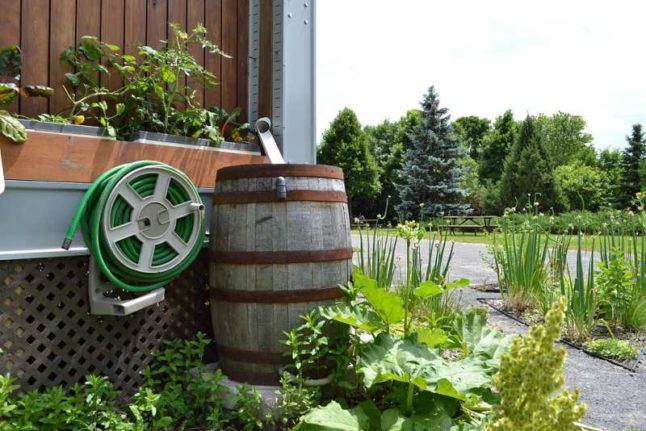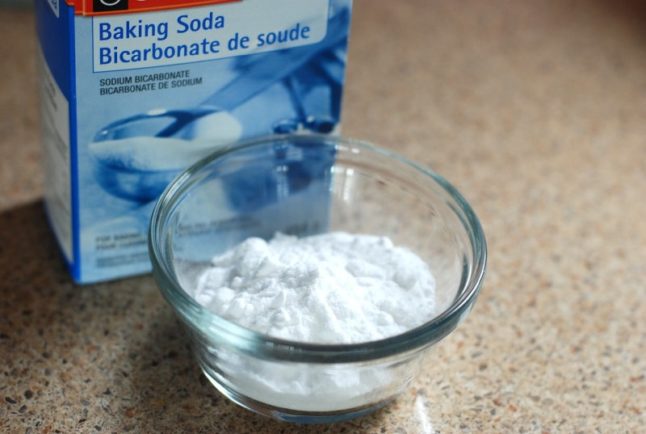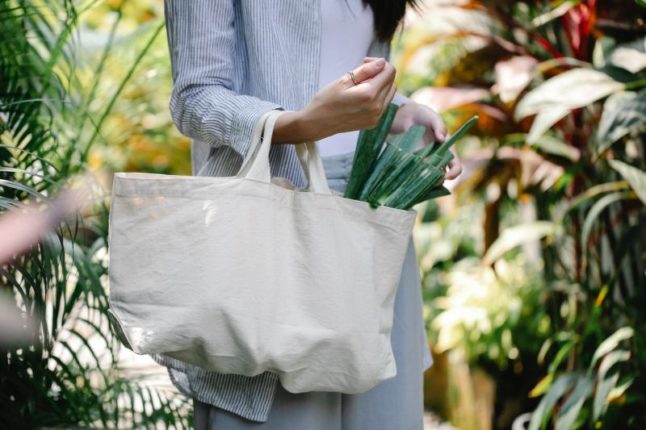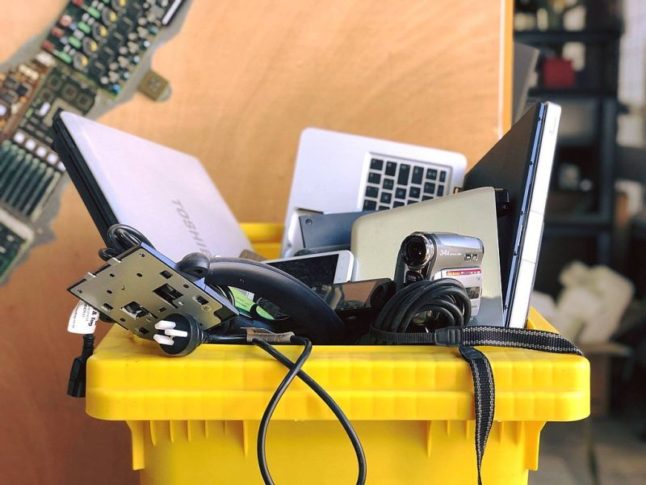
Kermit the Frog may croon it’s not easy being green, but he’s wrong. This Ultimate Guide to Going Green will show you 50 ways you can save energy and the environment in your yard, throughout your house, at your office, and when you’re out and about.
These 50 ways to go green vary in price from a couple of bucks for a coffee mug to take to work to tens of thousands for solar panels to let sun power your home. Easy being green, yes. Costly? It can be.
Where to begin living a greener life? Green living can be as much or as little as you like. You can start small, such as avoiding plastic bags when shopping, or go all in with a carbon neutral home (more on this later) and electric car.
In This Article
Green landscaping guide
1. Eco-friendly lawn equipment
2. Go native with native plants
3. Go natural with fertilizers and pesticides
4. Sprinklers bad, irrigation good
5. Use trees and shrubs as windbreaks
6. Cut the grass: Hardscapes, artificial grass, rock gardens instead
7. X (xeriscaping) marks the spot
8. Catch the rain
9. Let there be motion-sensor LED and solar lights
Green living at home
10. Look for the Energy Star
11. VOCs are not OK
12. Get smart about your thermostat
13. Energy-efficient HVAC, ASAP
14. Garage door updated
15. Look to the sun for power
16. Go tankless with your water heater
17. Ceiling fan-tastic heating/cooling
18. Go with the reduced flow (for showerheads)
19. Green up your beauty products
20. Cloth napkins and towels
Green food guide (not a guide to lettuce and broccoli)
Green guide to cleaning
Green shopping guide
Going green at work
Green travel guide
What’s the purpose of this Ultimate Guide to Going Green?

The goal of living green is to reduce your carbon footprint and keep trash out of the landfill. As you become more aware of your environmental impact and the effects of climate change, you may choose to adopt an eco-friendly lifestyle.
Let’s get started with the 50 easy — but sometimes costly — ways you can go green. Since this is LawnStarter, we’ll begin with how you can go green outdoors in your yard before we move indoors.
Green landscaping guide

Greening up your landscape is pretty easy. It’s as simple as upgrading your equipment and tools and cutting back on synthetic chemicals.
1. Eco-friendly lawn equipment
As your gas-powered lawn care equipment wears out, replace these tools with battery-operated equipment. Electric mowers, weed whackers, and trimmers are readily available for homeowners. Pay attention to battery capacity — how much time is needed for the job, such as mowing the lawn.
Going green with your lawn care equipment can save you some green — average regular unleaded gas prices fluctuate and peaked at $5.016 per gallon in June 2022, according to AAA.. Especially if you have a small yard, a battery-powered or electric mower make sense.
Yes, battery-powered lawn care equipment costs a bit more upfront than gas mowers, string trimmers, and leaf blowers, but you won’t be paying to fill up a gas can every few weeks or months to do your yard work.
And you may soon need to make the switch from gas- to battery-powered mowers, blowers, and trimmers because of state laws or local ordinances.
Pro Tip: Make sure your tools use the same interchangeable battery. It doesn’t hurt to have a backup battery. Oh, and look for sales and savings on eco-friendly lawn care equipment around Earth Day.
See Related: California’s Green Lawn Care Law
2. Go native with native plants
Green landscapes depend on native plants to attract and support pollinators: Bees, butterflies, birds, beetles, and flies.
What are the benefits of going native with plants in your flower beds and around your yard? Native plants are low maintenance, and they’re often drought resistant. This means you’ll spend less on watering your garden and on fertilizers and pesticides.
Native plants are another example of how living green can save you some green.
What makes native plants so ideal for your yard? Native plants have adapted to be perfectly suited for the climate and soil conditions where you live. They look and smell great, draw pollinators, and they require less weeding.
3. Go natural with pesticides and insecticides
Reduce or eliminate the use of insecticides to go green in your lawn and garden. Why? Most insecticides are indiscriminate and will kill unwanted Japanese beetles along with pollinators like bees and butterflies.
Even worse? Chemical fertilizers on your lawn and insecticides in your house could sicken your children or kill your pets.
Better choices? Corn gluten meal is a natural weed killer for your lawn, and ladybugs, essential oils, and a mixture of dish soap and water often can help you to get rid of other common pests.
Cost? Maybe $0, as you have dish detergent in your kitchen and essential oils in your home.
Whether you go natural or chemical with your fertilizers and pesticides, always read and follow label directions.
4. Sprinklers bad, irrigation good
Avoid water-wasting, overhead sprinklers. Opt for an irrigation system instead. The system should be zoned for specific areas, such as lawn, shrubs and perennials, where water requirements are different.
The goal: Use the right amount of water for your lawn and plants. This will cut down on your water bill and avoid under-watering or overwatering of your greenery.
How much will a sprinkler system cost you? Our sprinkler pricing guide finds the average total cost will be around $3,150.
5. Use trees as windbreaks
Plant deciduous trees on the west and south sides of your home. These trees provide shade in summer and allow warming sun in during winter, reducing cooling and heating requirements.
Let Mother Nature cut your heating and cooling bill by blocking the cold winds and keeping your house cool in summer.
And how much does it cost to plant a tree? Our cost to plant a tree pricing guide finds that it costs between $150 and $1,850 to plant a tree.
Want to save on this cost? Check with your utility company, as many have free tree programs. Google your city and “free trees” for other local tree giveaway programs.
6. Cut the grass: Hardscapes, artificial grass, rock gardens instead
Would you rather not spend your weekend mowing your grass and tending to your garden? Replace your lawn with low-maintenance artificial grass or a rock garden.
Hardscapes like permeable patios, sidewalks, and walkways can make your outdoor space more enjoyable, too. Why permeable? This allows rainwater to percolate through the soil rather than running off into the streets or sewer system.
Bonus points? More hardscapes means less grass to mow.
How much would these changes cost you? Check out our pricing guides on artificial grass, and the cost of a concrete slab and a concrete patio. Factor in your savings on mowers and trimmers or what you’re currently spending on a lawn care service.
7. X (xeriscaping) marks the spot

Going green can mean going gray, brown, or the soft green of succulents by xeriscaping your yard.
What is xeriscaping? The term was born in Denver, where xeriscaping trades grass for rock gardens, succulent gardens, yucca and other water-sipping plants. The aim? To replace water-hungry grass with rocks, drought-tolerant grasses, and plants that need little or no H20.
Xeriscaping is one of the more expensive (upfront) ways to go green. Our xeriscaping pricing guide finds that the typical xeriscaping cost ranges from $10,000 to $19,000, depending on your yard size and particular plans, with a nationwide average of $17,000.
8. Catch the rain

Rain barrels are a terrific way to water the plants in your garden in the city or to gather water for cooking and cleaning if you are living off the grid.
But is harvesting rainwater legal in your state? Our guide details the rainwater restrictions and incentives by state.
Cost of a rain barrel? You’ll typically pay between $120 to $160 for a rain barrel, but do some checking online first. Texas, for example, has incentives for harvesting rainwater. Some cities have free rain barrel programs, too.
Pro Tip: To rein in your outdoor water usage, set priorities. Food crops first, then plants in containers, then annuals, perennials, shrubs, trees, and finally, your lawn. Yes, we’re LawnStarter, but be sensible about watering your grass, and heed any local water restrictions.
9. Let there be motion-sensor LED and solar lights
Why pay to keep the lights on outside all night long when motion-sensor LED lights will go on only when needed to light a path (or scare away a would-be intruder)? Lights that aren’t on all the time will cut your utility bill.
Even better? If you do want lights on outside all night, let the sun power them. Solar landscape lighting (stakes, for example) are increasingly common along driveways, sidewalks, and pathways (like from your back door to the hot tub).
Prices for LED motion-sensitive outdoor lights start around $20.
Green living at home

You can live a greener, cleaner, simpler life inside your home, too, and just like with your outdoor space, eco-friendly improvements range in price from a few bucks to several hundred or several thousand dollars.
To get started, develop a plan for eco-friendly home projects and take it slow. Make sure to research products and processes so there are no surprises. Determine if the sustainable improvements will increase the property value of your home.
10. Look for the Energy Star
As appliances need replacing, look for those that bear the Energy Star symbol. The government-backed Energy Star program features appliances and other products that save you money over time and protect the environment.
How can these greener products save you? An Energy Star-certified light bulb uses up to 90% less energy than standard bulbs, lasts at least 15 times longer, and saves about $55 in electricity costs over its lifetime.
Similar power and cost savings can be found with Energy Star appliances for your kitchen and throughout your home.
Rebates and other incentives can further lower your cost when you purchase Energy Star appliances.
11. VOCs are not OK
What are VOCs and why are they not OK? VOCs are volatile organic compounds and they can be found in furniture fabrics, flooring, furniture, or paint.
Worth noting: Many manufacturers have changed their products to reduce emission of these allergy-inducing or toxic chemicals.
What can you do to reduce VOCs in your home? The Minnesota Department of Health suggests:
- Only buy what you need when it comes to paints, solvents, adhesives, and caulks. Unused chemicals stored in the home can sometimes “leak” and release VOCs into the air. Increase ventilation by opening doors and windows.
- A better solution? Store paints and other chemicals in a garage or shed (away from where people gather every day).
- In your home, keep both the temperature and relative humidity as low as possible or comfortable.
12. Get smart about your thermostat
A programmable thermostat to control your heating and cooling system is just plain smart. When you’re not home, why keep your AC going full blast? Same goes for your heat.
Energy Star estimates that homeowners properly using programmable thermostats can save about $180 a year.
Even cooler (or toastier)? Some of the newest programmable thermostats can be controlled via an app on your phone. Working late at the office? Keep the AC dialed down till you’re packing up and nearly on your way.
Cost of a programmable thermostat? You’ll pay anywhere from $20 to about $150 or more.
13. Energy-efficient HVAC, ASAP
When it is time to upgrade your heating, ventilation, and cooling system, go with the most efficient available. Which one is that? Start by looking for that Energy Star seal.
How much will a new HVAC system cost? According to our HVAC installation pricing guide, on average, homeowners can expect to spend between $5,000 and $9,000 for an installed basic HVAC system.
14. Garage door updated
If your garage is attached to your home, make sure the garage door is energy efficient or made from recycled materials.
A garage door replacement is an eco-friendly home improvement that will increase your home’s curb appeal and generate a high return on your investment.
How much will a garage door replacement cost? According to our pricing guide, homeowners can expect to spend between $590 and $1,650 on a professional garage door replacement, with an average cost of $1,120.
15. Look to the sun for power
Install a solar array to power your home, save money and reduce dependency on a utility company. Solar panels also are one of the ways you can achieve a zero carbon home (heat pumps, insulation, triple-glazed windows are other pieces of the puzzle).
How much will going solar cost you? Well, that depends on whether you opt for a solar roof or solar panels. We have pricing guides for both of these.
- The cost of a solar roof can fall anywhere between $40,000 and $60,000 for a standard project, before the 30% federal solar tax credit.
- The average price of solar panels, including materials and professional installation, is $20,000. Most homeowners will pay $15,000 – $26,000.
16. Go tankless with your water heater
Replace the hot water storage tank system with on-demand or tankless water heaters. These efficient appliances reduce energy demands, which saves money.
The average cost of a tankless water heater is just under $3,000, but large or specialty appliances could cost you at least double that amount.
Pro Tip: Make sure the tankless water heater does not waste energy. Some gas-fired on-demand tanks have pilot lights.
17. Ceiling fan-tastic heating/cooling
Ceiling fans circulate the cool air in your home (and on your front porch or balcony, depending on where you live).
Ceiling fans also help push warm air down to you whether you’re in your living room, kitchen, or bedroom when it’s cool or cold outside.
Use ceiling fans to move cool or warm air, reducing heating and cooling needs. Follow the settings for summer or winter use.
18. Go with the reduced flow (for showerheads)
Install reduced-flow showerheads to save water. How much water? Low-flow showerheads can reduce your water consumption by 40% to 60% per month.
That’s a significant savings, because, as you can see, without a low-flow showerhead, you are literally watching your money go down the drain.
The savings isn’t just monetary, though. In Colorado and across the Southwest, any water savings helps as the region is in the midst of the worst drought in decades.
19. Green up your beauty products
Sure, you could continue spending for those brand name beauty products you get at your favorite department store or online, but you could go greener (in ingredients) and save green too.
Where to begin? Just Google “make your own beauty products” to get started. The DIY divas are all over this.
You can thank us later.
20. Cloth napkins and towels
Paper napkins and paper towels are super convenient, but they’re also super wasteful and super costly.
Cloth napkins and towels can be tossed in the wash, folded, and reused for years.
The cost savings? A hand towel or cloth napkins generally cost less than a package of several rolls of paper towels and will last a whole lot longer.
The environmental savings? Just count how many times you tear a paper towel from the roll during a day and then toss it in the trash a few minutes later. All that paper is going to a landfill.
Everything comes out in the wash, they say. That’s exactly the case with all the spills wiped up with a cloth towel or napkin.
Bonus points? You will be emptying your trash less frequently if you switch back from paper towels to the cloth kind your mom and grandmother used.
Green food guide (not a guide to lettuce and broccoli)

21. Hold the fries … and plastic utensils
You ordered takeout, but do you really need a plastic fork, knife, paper napkin, and salt packet with your order? You already have all of that at home.
Ask about carry-out food packaging, and just say no to the unneeded plasticware.
Bonus points for eco-friendly restaurants: Expanded foam containers are still very popular, but many restaurants have switched to paper-based or plant-based materials.
22. Buy organic
Purchase organic produce and meat when available. Most supermarkets carry organic foods year-round. Why buy organic? You’re buying fruits and vegetables that are all natural.
Note: Organic does not mean pesticide-free. Certified organic growers are not allowed to use synthetic products. However, they are allowed to use natural products, some of which can be dangerous.
How can you know what you’re buying is really organic? Here’s another label to look for: OMRI – certified by the Organic Materials Review Institute. OMRI ensures products meet standards and requirements for organic food production.
23. Go nuts (and grains)
Eat lower on the food chain, such as nuts and grains. These are a whole lot more nutritious for kids (and adults) than many other snacks, and they also are more natural. Heavily processed foods have been linked to disease.
And if you’re going green with nuts, how about popping more green pistachios into your meals. They’re great on salads, cakes, and candies.
Nuts and grains may cost you a bit more green than other snacks, but maybe not. Prices have spiked in the snack-food aisle in the last several months.
24. Trim the meat and fish
Reduce meat and fish consumption. Switch to greens (literally and figuratively) and other vegetables and fruits.
Beef prices have soared, so you’ll be saving money by eating more from the produce department and less from the meat department.
And you’ll be saving the planet, too. Cow flatulence is indeed a cause of global warming.
25. Grow your own
Grow your own veggies and fruit. Watching carrots, beets, and strawberry plants pop out of the ground and grow is half the fun of gardening.
The less fun part? Weeding and protecting the soon-to-be fruits of your harvest from marauding rabbits and other animals or insects.
But think of the savings. You eat what you grow, and you likely will even save gas as you’ll be making a few less trips to the grocery store every few weeks.
And think of the family lessons as your plants grow, and then harvest those vegetables and fruits. You’ll have a lot to eat – and talk about – around your dining room table.
26. To market, to market
If you can’t grow your own, shop farmers markets, especially for seasonal produce. Many farmers markets operate year-round, moving to an inside location during winter.
And if you do grow your own, farmers markets are great places to find homemade breads, microgreens, fresh brown eggs, and even bone broth for Rover.
Pro Tips: Bring your own bags – after all, this is a guide to green living and bringing your reusable bags really helps. Also, ask vendors about how they grew the food they display. You can get tips for how to grow a fruit, vegetable, or herb, when you next plant in your own garden.
27. Have morning coffee at home
Your Starbucks habit is costing you a latte. So, drink your coffee at home instead.
You can espresso yourself and brew your coffee just the way you like it.
Other advantages of having morning coffee at home? You don’t have to stand in a line, and you’ll save on gas too. Oh, and no paper cups and cardboard heat protectors to carry around to later trash or recycle.
Pro Tip: Put what you would have spent at Starbucks (say $5 a cup and count the tip you would have left too) or your favorite coffeehouse in your own Tip Jar at home on a counter. Watch your savings grow.
Even better? Drop some “tips” in the jar – tips for what you might do with that money in six months or a year. Dream a little.
28. Support your community agriculture
Join a Community Supported Agriculture program. By partnering with the farmer/grower by agreeing to purchase a certain amount of seasonal food, you are supporting local agriculture and getting fresh food.
You can supplement what you grow in your garden with the fruits of others’ labor in their gardens, and you are helping others in your community, too.
That’s a win-win. You’ll meet new people too, which makes this a win-win-win.
29. Reduce food waste
Roughly 40% of food is wasted, valued at $108 billion, each year. Which states waste the most food? Well, LawnStarter ranked them, and you might be surprised at the results.
How can you cut down on your food waste? Start a compost pile in your yard, or get a compost bin, for starters. There are compost bins for outdoors and some for indoors too.
Not sure which compost bin might be best for you? Check out our ranking of the 5 Best Compost Bins.
Green guide to cleaning

30. Reusable bottle savings
Use powders or tablets you add to a reusable bottle. This greatly reduces the bottles of cleaning supplies under the sink.
If we all did that, there would be a whole lot fewer bottles going to the recycling plant – and we would have more room under our sinks.
31. Plop, plop, fizz, fizz … for detergent
Plop tablets, pods or strips of detergent in the washing machine. These reduce the plastic packaging, made from petroleum-based products.
Just keep those pods away from your kids. And your pets.
32. DIY cleaning solutions
Handy kitchen essentials, such as white vinegar and baking soda, are easy DIY cleaning products.
How this saves you: Your shopping bill will be less, there is less packaging to recycle, and there are fewer chemicals in your cleaners that could irritate your skin.
Pro Tip: If you use a cleaning service, ask workers to use environmentally friendly products.
Green shopping guide

Most shoppers know getting your purchases packed into plastic bags is not green. But if you’re like a lot of people, your reusable bags are in the car and you’re in the checkout line. Pledge to do better.
33. Shipping’s added costs
Where is a product made? Is it local or shipped from another land? It takes a lot of resources to get something to the United States from China, for instance.
That’s something to consider with every online purchase – or even those blueberries grown in Peru that you bought at the grocery this past week.
Shipping has added costs closer to home, too.
You save shipping costs when you visit your farmers market. Instead of buying Wonder bread made in some faraway city, you can get a loaf from Hilda or Adam. Their bread is baked locally, maybe in their own kitchen, and it doesn’t include chemicals.
So you don’t have those preservatives and the plastic wrap and twist tie? That’s OK.
Once you buy bread locally, you may wonder why it took you so long to do so.
34. What’s it made of?
Examine what any common product is made of. Is it plastic, metal, wood or something else? Think about the energy required to make the product, especially if it’s plastic, which uses petroleum in its manufacturing. Can the product be recycled?
Let’s talk eyeglasses for a minute. You can opt for metal frames, or plastic frames, but you can also get wood frames. Now that’s going green with your glasses.
And when it’s time to get new eyeglasses, recycle your old ones. There are Lion’s Club collection bins for your old eyeglasses in many Walmarts.
Now let’s look in your pantry and on store shelves.
We’ve been eating soup from cans for decades, but you can get your chicken soup from what looks like a larger-size kids drink box. Progresso tried putting regular-size canned soup in boxes, but that didn’t catch on. Sometimes manufacturers are ahead of the green times.
35. That’s a wrap
How much packaging is there wrapped around the product? More packaging, more trash. Can the packaging be recycled?
Your favorite soft drink (or pop, depending on what region of the country you live in) is in smaller size cans and bottles these days.
Why? One, less packaging means less to recycle. Two, soft drink makers are consciously trying to encourage us to drink a bit less with those pony-size bottles or pint-size (not literally) cans.
36. Dry (eco-friendly) cleaners
Patronize dry cleaners that use eco-friendly products.
What is eco-friendly dry cleaning? According to GreenerCleaner, there are two dry cleaning options that are considered eco-friendly – wet cleaning and liquid carbon dioxide cleaning.
While these two methods are quite different from each other, neither process uses any toxic chemicals.
How to find an eco-friendly dry cleaners? Just key that phrase into Google to find options near where you live.
37. Get crafty: Make gifts instead of buying them
Give a gift that’s handmade for a birthday, house-warming, or at the holidays. An afghan knitted by an aunt will be a treasured gift, for example.
Here are some ways you can make gifts instead of buying them:
- Buy some paint and small canvases and create something unique for family members and friends.
- Pick a bouquet of flowers from your yard as a gift for your new neighbors.
- Think outside the boxed gifts. Bake something yourself.
Something you made is so much more personal, and you’ll feel good, too. You’ll spend less, avoid shipping costs and taxes, and all that packaging won’t end up in a landfill or recycling center.
Going green at work

Many corporations already know the importance and value of recycling computers, hard drives and other electronic equipment, but if your workplace isn’t one of these, that can be a starting place. If you are the company owner or a manager, you can make it happen.
Here are some ways to install blue bins and instill green thinking at work:
38. (Recycle) bins there, done that
Develop a recycling plan and discuss it with your co-workers and the boss. You may not be able to get the whole company to recycle, but you might find success in your department.
Detail where you would place blue recycling bins, what would be recycled and who would empty the bins.
39. Take home your trash
If your company doesn’t have blue bins, recycle your trash by taking it home.
And if you work from home, you save gas and steps – take your trash from your home office to the recycle bin in the kitchen or the compost pile in the backyard.
40. Less printing, more sharing (of documents)
Buy eco-friendly supplies or those made of recycled materials, such as copy paper or printer ink.
Print only when necessary. Sharing copies among staff is another way to reduce printed copies. Information also can be shared digitally.
And do you need copies at all? Share a Google doc instead. Everyone will be on the same page without printing and passing out all those pages.
41. BYOM (Bring Your Own Mug) for coffee
Set an example at work – bring your own coffee (or tea) mug from home. All those paper or Styrofoam cups add up, and drinking from your own mug doesn’t contribute to all that waste.
Bonus points: Your coffee mug can show a bit of your personality. (Just don’t go too far. You don’t want a coffee mug that’s NSFW).
42. Get smart about lighting
Install motion sensor lights in offices, restrooms and hallways. The lights are on, but no one’s home was a popular phrase, but today it has a new meaning as companies try to cut power costs.
Motion sensors turn on the lights as needed after working hours. Going dark when no one’s around saves power and money.
43. Go dark at night
Turn off lights at night in high-rise buildings. (This is Tip 42 but taken to a higher level – several floors – and with an added benefit of saving birds)
Not only do high-rise lights use energy, they also disorient migrating birds. This causes them to crash, die or injure themselves when they fly into the glass.
At a minimum, consider turning off the night lights the few times a year when birds migrate.
44. Motion sensor restrooms
Install motion-sensor faucets and soap and towel dispensers in restrooms.
There’s an additional benefit to these motion-sensors now – they not only reduce waste, but they also reduce the spread of germs as people no longer touch faucets and soap and towel dispensers.
Green travel guide

Green travel includes grouping trips rather than making multiple short drives. When selecting a pharmacy or favorite restaurant, consider those within walking distance or a bike ride away.
45. Use your feet
Park your car in the garage or driveway and walk, ride a bike or rent a scooter to get around. Use Uber or Lyft for longer commutes, take public transportation, or car pool.
One of the greenest ways to get around is by bike. And what are the Best Biking Cities in the U.S.? Pedal on over to our study story. Maybe you will want to take part in National Bike to Work Day.
Curious what cities have great mass transit and lots of people carpooling to work? Check out our Best Cities to Live Without a Car.
Pro Tip: Check your health insurance as some will financially reward you for walking. For example, with United Healthcare’s Motion program, you can earn up to $3 per day or a little over $1,000 per year just by walking.
Walking around airports counts. So does walking the Gateway Arch grounds in St. Louis, the Malecon in Puerto Vallarta, or along your favorite sandy beach. Step to it.
46. EV or not EV (maybe go hybrid instead?)
When you’re ready to trade in your vehicle, consider electric or hybrid fuel vehicles, though this is one of the spendiest ways to commit to green living.
Evaluate what kind of a vehicle you need: SUV or mini?
EV or not EV, that is the question, a modern Shakespeare might say.
Don’t forget the incentives for purchasing an electric vehicle. Those will lower your price and ease your sticker shock a bit.
Oh, and when you travel on vacation or business trips, sustainable hotels often offer EV charging stations or EV rentals.
47. Workin’ at the car wash
Use a car wash rather than washing your car at home. Why? The car wash recycles its water.
The only benefit to washing your car at home? The exercise you get – maybe so much exercise stretching and polishing you’ll be sore in the morning.
48. Fly non-stop
Select direct routes when flying. Fly with airlines that use biofuels to reduce use of fossil fuels.
Both of these take some research on your part.
Flying direct saves you time and hassle, as well as saving the environment a tiny bit.
As far as biofuels, nearly every U.S. airline is dipping its toes (wings?) into biofuels, but some are more actively reducing their reliance on fossil fuels than others.
49. Share a ride
Use trains, buses or vans when traveling to and from the airport, rather than taxis or single-ride vehicles.
Another benefit of commuting with others? You’re communing, too.
Sure, you can share a ride with your nose in a book (or in the air), but you could also meet people going to the same place with tips on what to see and do.
50. Fill ‘er up
Travel with a reusable water bottle. Imagine all the bottles of water you won’t buy and then toss in the trash or a recycle bin.
It’s the little things that can make a difference, so drink up from your water bottle.
Pro Tip: Maybe stick to bottled water when visiting Mexico or other countries?
Green Thumbs, Green Cars, Greener Pastures
Please don’t be overwhelmed by these suggestions, which really only scratch the surface on how you can live green. (We didn’t even touch on green burial options.) Remember to start with baby steps and build from there.
Make a list of what you already are doing to live green. Pick a few of these suggestions to incorporate into your lifestyle every few months. You’ll feel better knowing that even small steps can make a difference.
And don’t forget Kermit. He’s wrong. It’s easy to be green in many ways.
Green thumbs grow their own fruits and vegetables in their own or a community garden.
Green cars? Well, there are less expensive ways (for now – electric vehicle prices are coming down) to go green.
Greener pastures? Living green means less waste, less pollution, cleaner air, and yes, greener pastures. Taking small steps in a green direction adds up. They’re all steps in the right green direction.
Main Photo Credits: Composite image with text overlay, reel lawn mower, coffee mug at work, and woman riding bike all from Pexels, Energy Star logo on appliance from Flickr (trenttsd / CC BY 2.0)